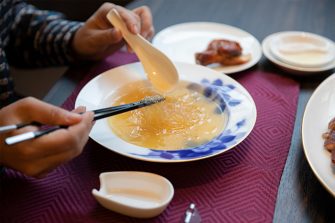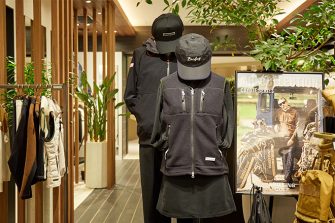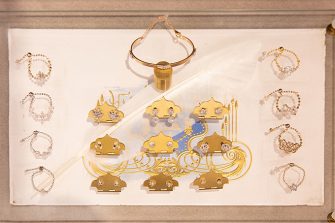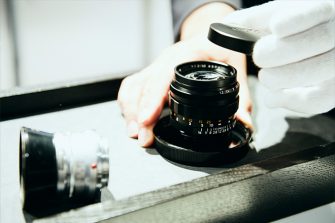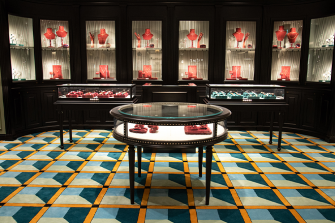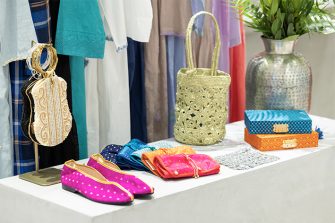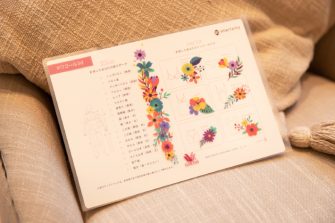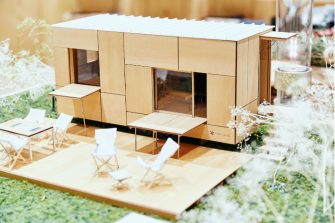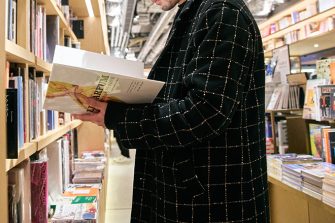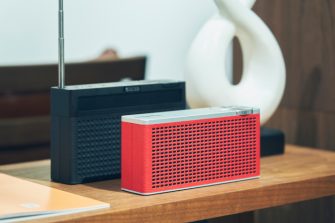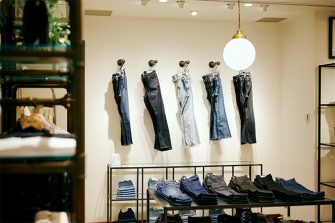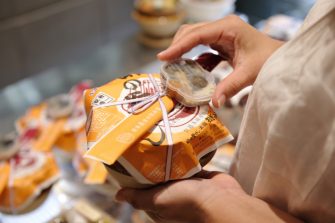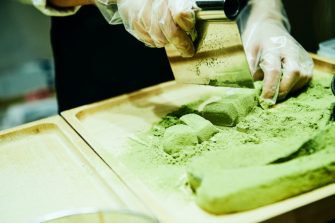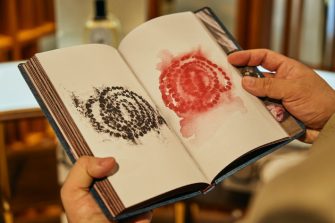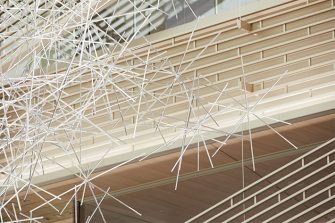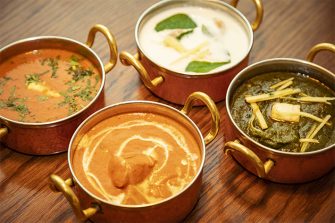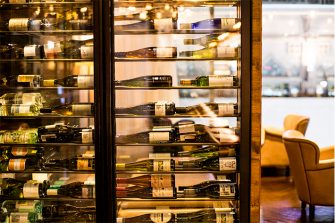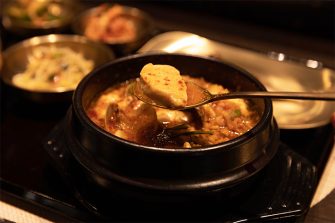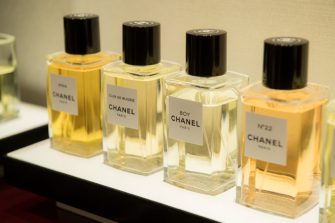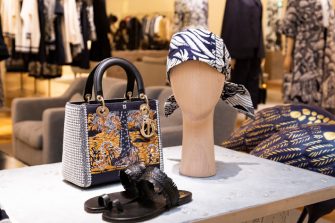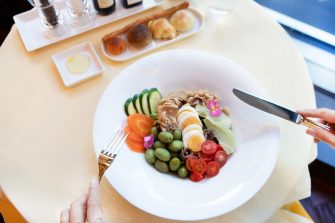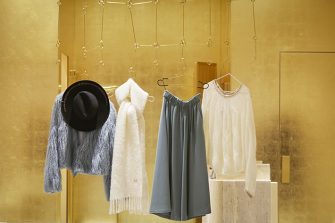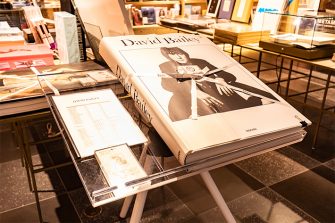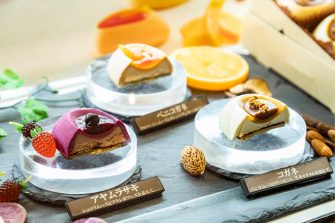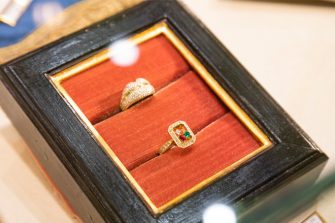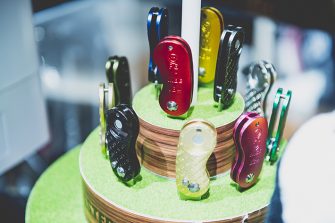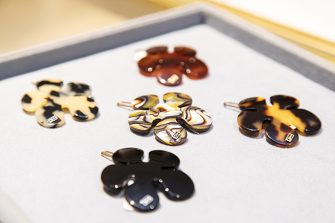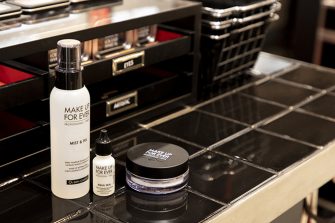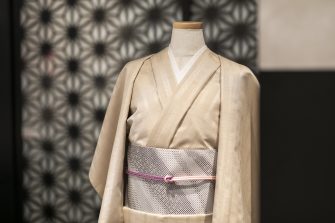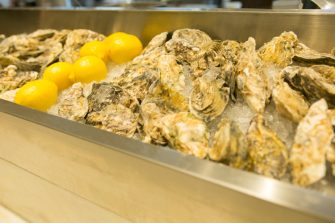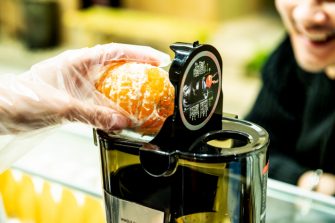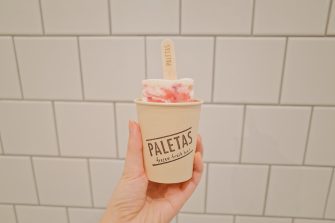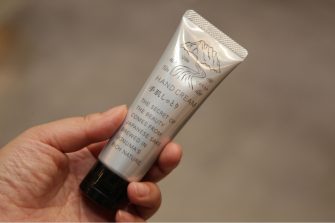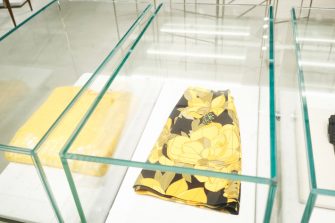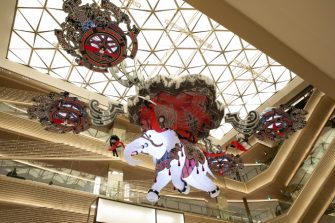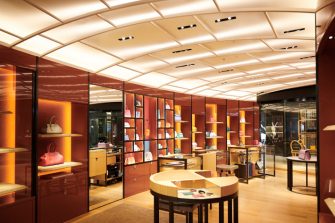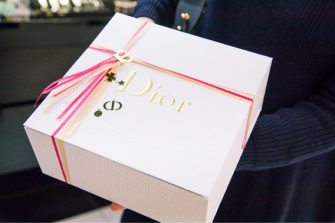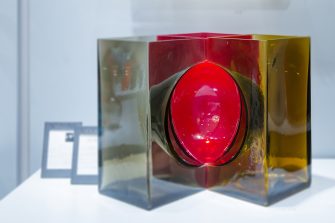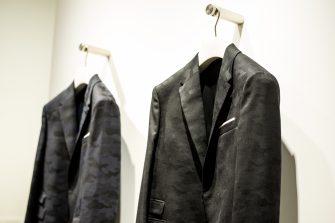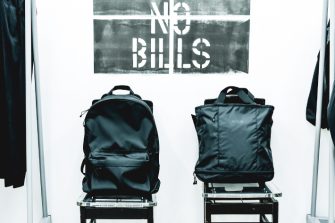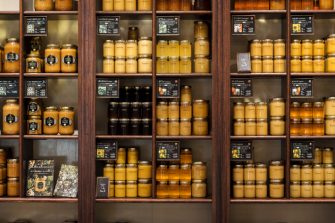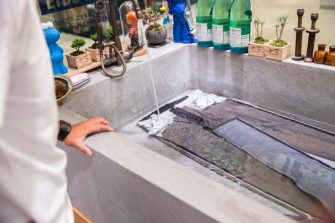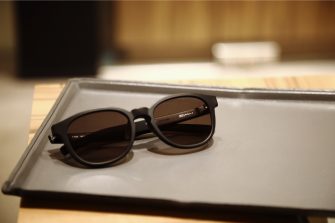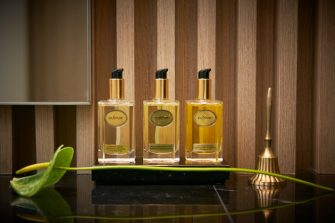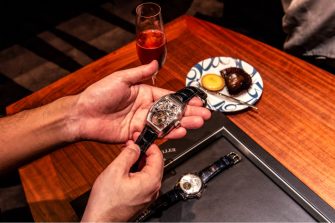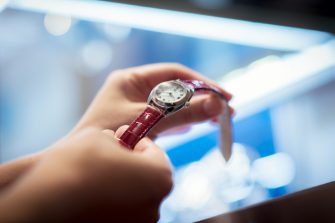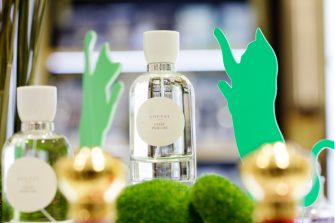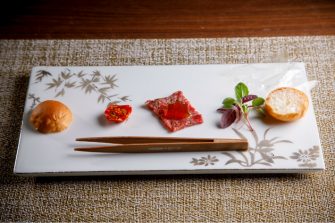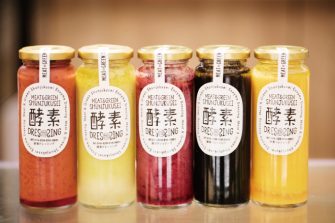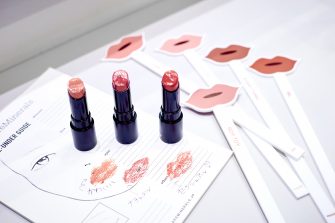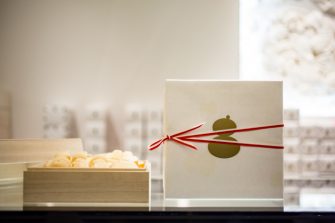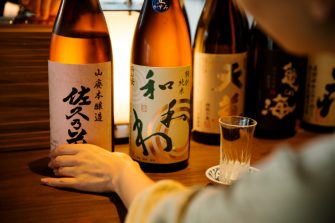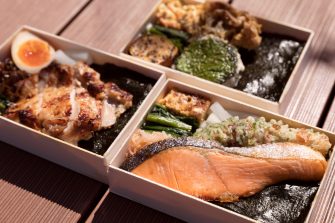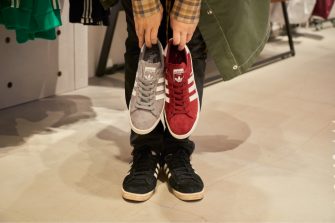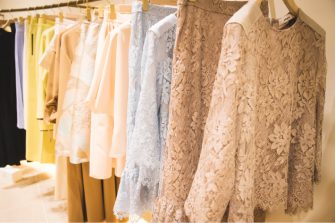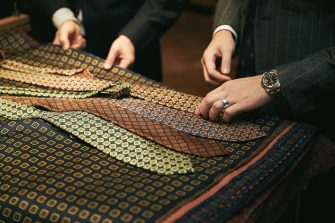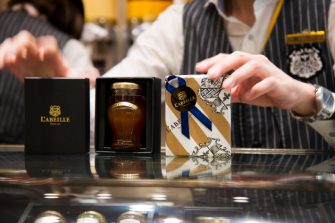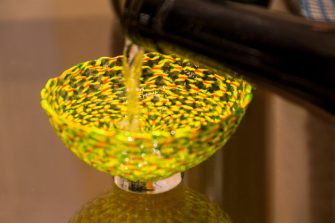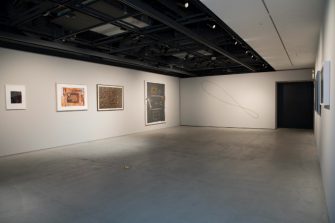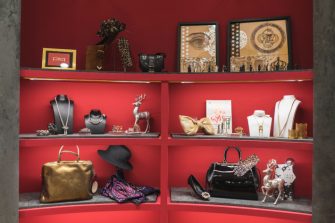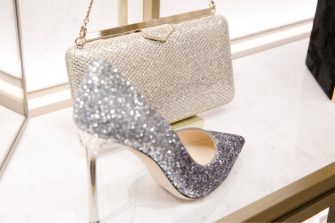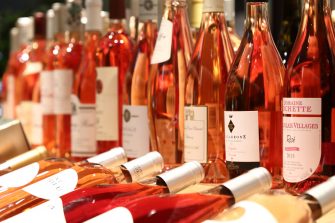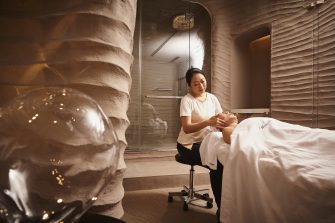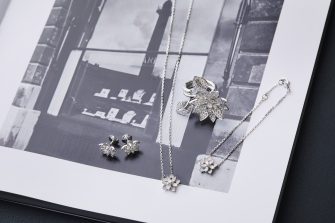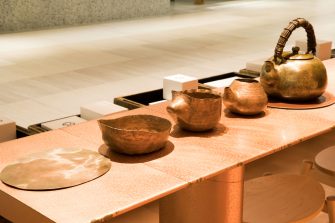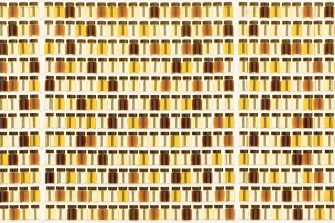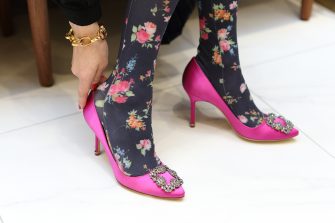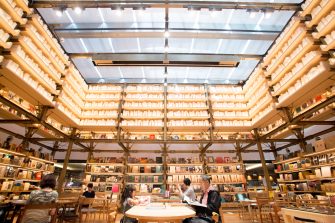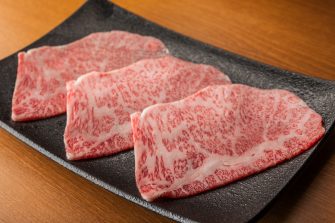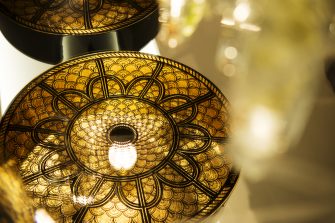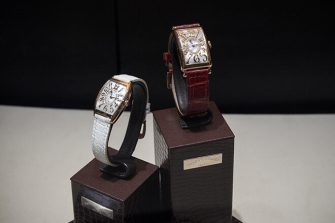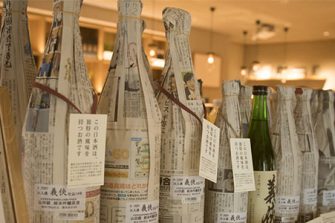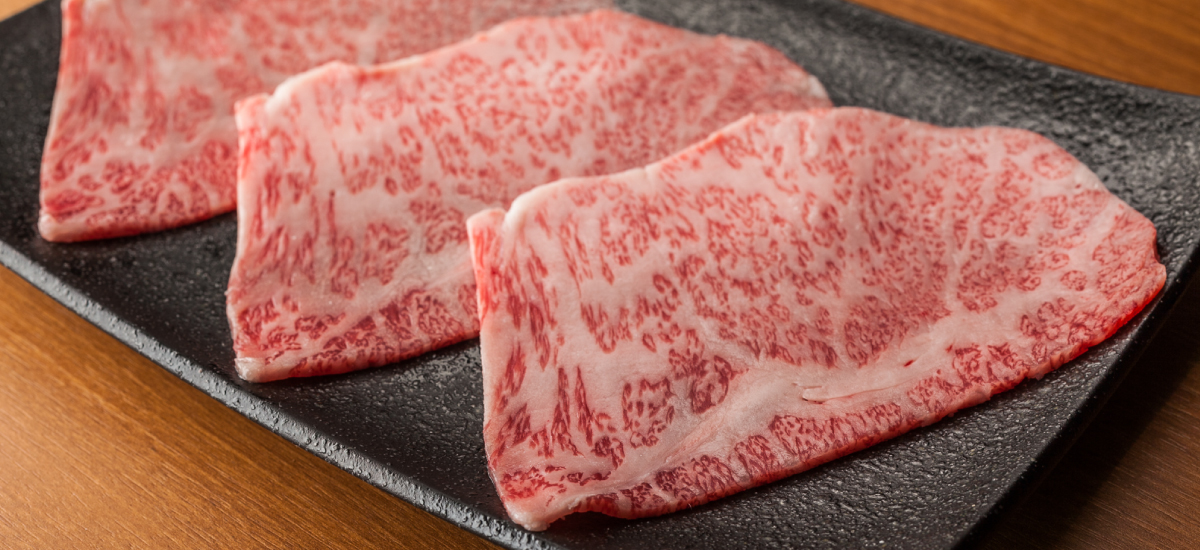

GINZA SIX EDITORS
时尚、珠宝&手表、生活方式、美容、食品…
精通各种类型的个性丰富的编辑们,在GINZA SIX上闲逛
记述走路发现的乐趣。
GINZA SIX,美味又快乐的“肉唇膏”! A Delightful, Delicious Carniventure at GINZA SIX
小寺庆子
GINZA SIX EDITORS Vol.9(Food)
公开说“人生最后想吃的是肉”十年。我是每餐都持续吃一些肉料理的肉食作家小寺庆子。听说能吃到美味的肉,东西南北到处跑的轻快和即使过度使用也不会沮丧的强韧胃。这次,听到了在银座能够进行“肉之旅”(我叫肉唇膏)的传闻,于是决定访问GINZA SIX。
银座是铁板烧、牛排等日式名店鳞次栉比的元祖、喜欢肉的圣地。如果能在眼睛和舌头都饱满的美食家的银座享受美食之旅的话,我就会充满期待。
首先,第一家拜访的是可以品尝到松阪牛的涮锅和寿喜烧的“名产松阪肉朝日屋寿喜烧牛涮松重”。
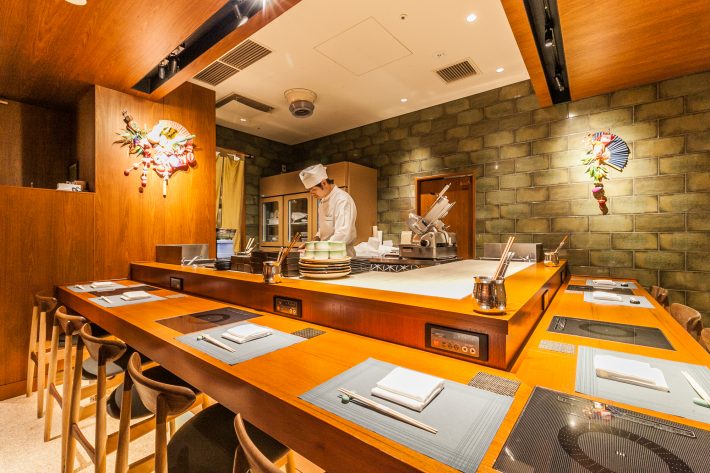
最近经常被称为“牛也是以品牌来选择的时代”,说到松阪牛,就是连哭泣的孩子都会积攒的超级品牌。从老字号肉批发的“朝日屋”直接用切片机切进货的极品肉,这样的展示让人心情高涨。

关西风味的寿喜烧一般是先烤肉再加入砂糖等调味料,而这家店则是关东风味的。加入了美丽竹荚鱼的肉,不愧是王者的风格。吃之前就放下美味的气场,快速地和鸡蛋拌在一起吃的话,就会有升天的心情。松阪牛A5热带(朝日屋)套餐可以选择寿喜烧和涮锅中的一种,午餐时间可以用6800日元,既划算感和幸福感都更加强烈!黑毛和牛的话午餐是3800日元~,晚餐4800日元~,性价比超群。
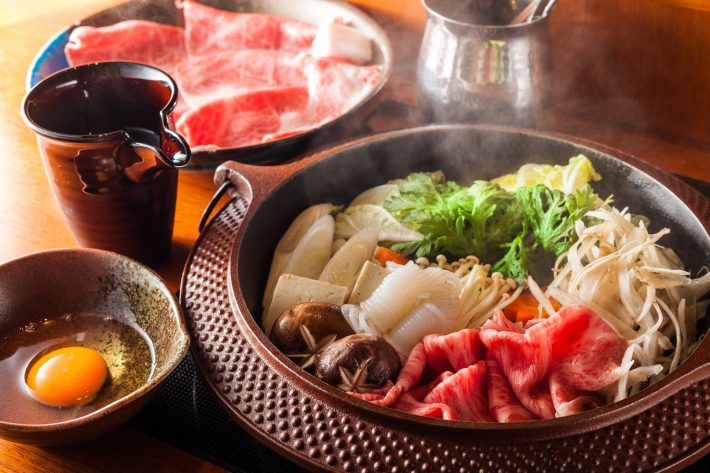
除此之外,近年来大受欢迎的黑毛和牛的牛猪排御前(2200日元)。米饭、红汤汁付)和味增作为佐料汁的和风炖菜(2400日元)等,丰富多样的菜单也很有魅力(牛排御前和风炖菜只提供银座大食堂内的摩登阳台)。
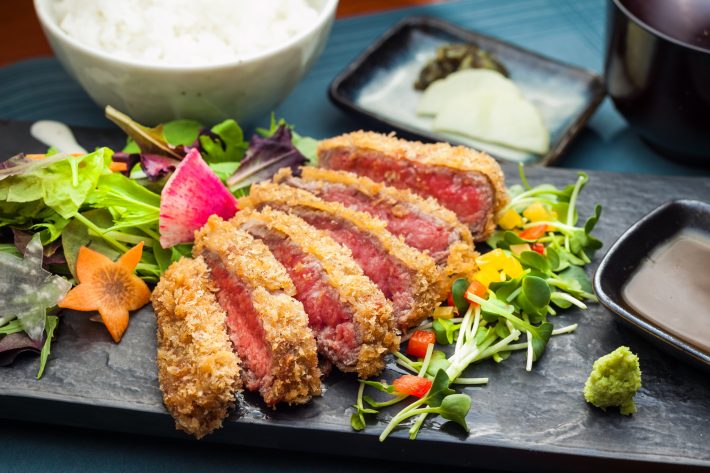
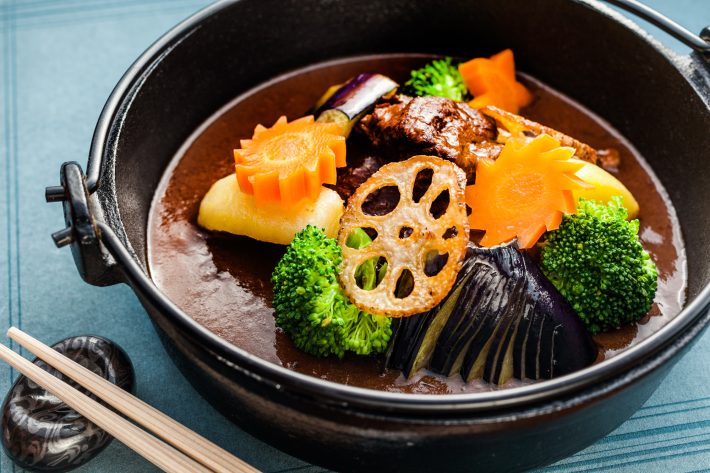
《松重》在再次确认了松阪牛压倒性的品牌力后,去了总店设在国分寺的烤肉“山水”。

人们常说“烤肉良店在偏僻的地方”,但是在意外的地方很少能遇到非常罕见的烤肉店。这样的店一般都是家族经营的传统烤肉店。1976年创业以来,深受当地人喜爱的“山水”是隐藏的名店之一。不是“敌人在本能寺”而是“肉在国分寺”,在烤肉ツウ之间是众所周知的存在。能在银座品尝到离市中心稍远的名店的味道,我感到非常高兴。一进店,首先映入眼帘的是墙壁上挂着的“反正要吃好吃的肉”字。在订购的生丹盐(2000日元/4张)和特上里脊肉(2400日元/2张)被运来的瞬间,我确信这个口号是没有虚假的。
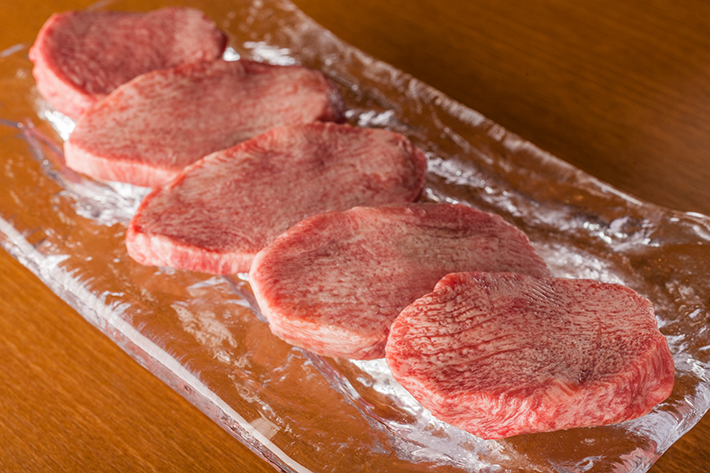
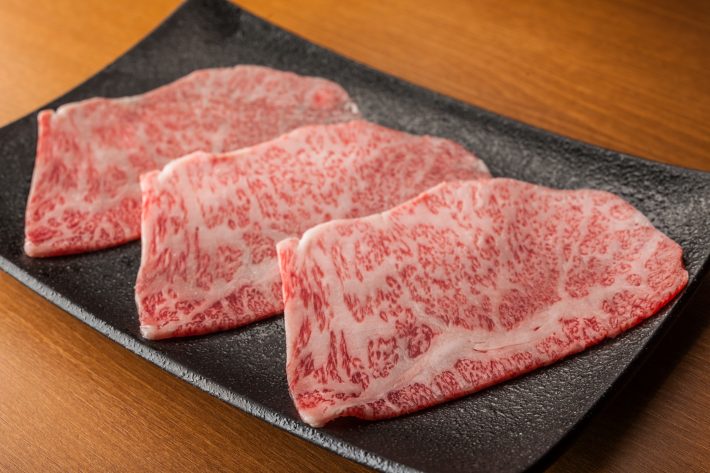
名产的生丹盐切成极厚,特上里脊肉的判处也很大。最近,以极厚的剪发和“大金币行为举止”为卖点的店铺不断增加,40年前就开始用手切的方式贯彻这种风格,真令人佩服!经常听到这样的声音:“和年轻的时候相比,放了生鱼片的肉了”,但是《山水》中的牛腰肉别说胃胀了,胃也很欣喜。以酱油为基础,加入自家制辣椒酱的调味汁也很好吃,这对喜欢白米的人来说是受不了的。一边去GINZA SIX的《山水》,一边坚定地决心近期一定要去国分寺的总店。
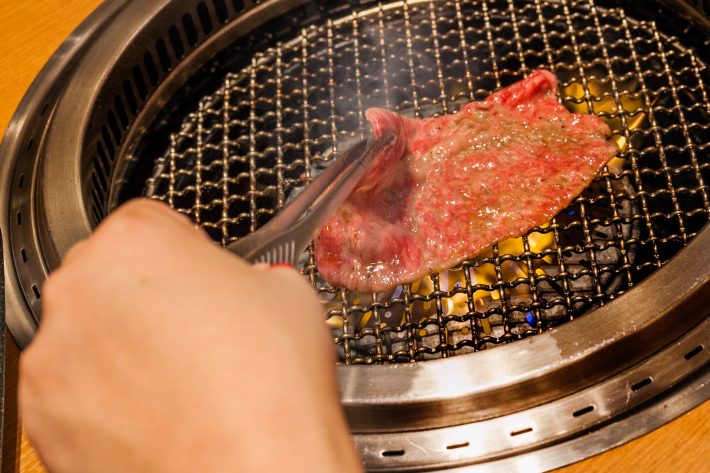

“JASMINE和心汉菜”一定要去拜访的是“JASMINE和心汉菜”。这家店是在广尾设有1号店、中目黑、日本桥也开设店铺的JASMINE的姐妹店。无论哪家店,连日盛况空前的“JASMINE”,主厨山口佑介先生做的以上海为基础的料理而受到好评,听说有只有GINZA SIX才能吃到的肉料理,就来了店里。

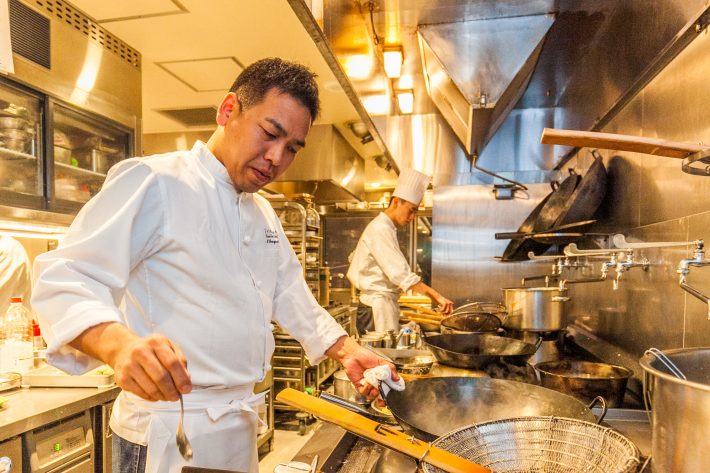
菜单上有JASMINE名产“垂头鸡”、(1780日元)宝塔制作的东玻肉(3600日元)、茨城县产香鸡广东风味脆炸鸡块(2800日元)等能刺激食欲的肉类料理。
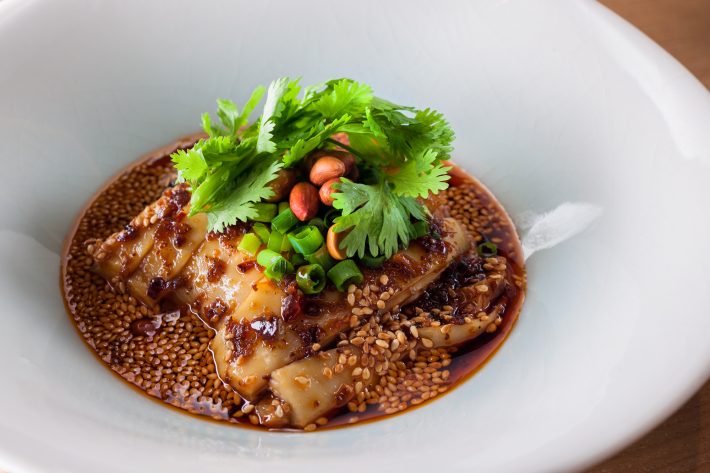
最后的担担面(山口先生做的担担面是绝品!)抓住想吃的欲望,点了原创菜单的四川×SUKIYAKI(3000日元)。特选牛里脊肉和自家制葱饼等蘸着辣的麻辣SUKIYAKI酱汁吃,是一种新感觉的寿喜烧。正如名为“和心汉菜”的店名一样,山口先生设计出了以和式和中华的融合为主题设计的菜单,如果喜欢肉的话就可以吃一次。
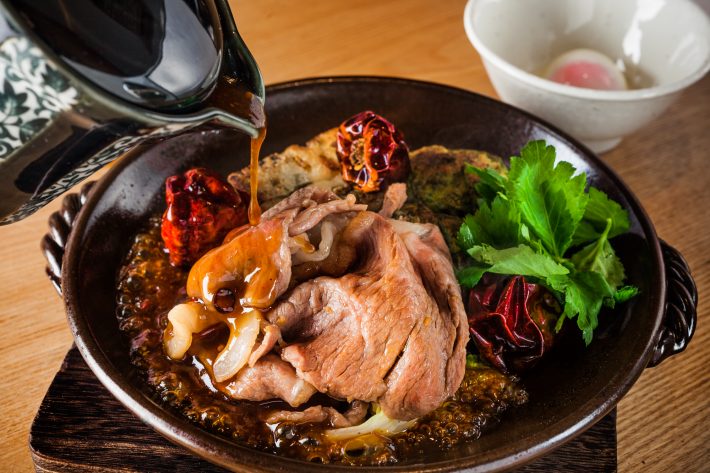
GINZA SIX还有很多个性丰富的饮食店。在银座呆着,可以轻松享受“肉唇膏”的美食馆。
Text:Keiko Kodera Photos:Hajime Tomizawa Edit:Yuka Okada
Some maybe 10 years ago, I declared meat to be the thing I would most want to eat for the final meal of my life. As the carnivore that I am, I’ve since continued to enjoy at least one kind of meat dish with every meal. I’m proud to declare that when I hear a place is serving delicious meat, I’m there—I move fast, whether north, south, east, or west. I also take pride in my resilient stomach, which is never discouraged despite this rigorous regimen. Today I’m heading to GINZA SIX because I’ve heard people say you can go on meat excursions in Ginza (something I like to call “carniventures”).
With its prestigious teppanyaki, steak, and other restaurants of the sort especially suited to special occasions, Ginza is truly a pioneering meat-lover’s holy land. Connoisseurs of refined palate and discerning eye assemble here. If you arrive at Ginza somewhat casually to go on a carniventure, your heart will no doubt swell with anticipation. First stop: Sukiyaki Gyu-Shabu Matsuju, esteemed for the pleasures provided there of shabu-shabu and sukiyaki with Matsusaka beef.

It’s often been said recently that we live in an era of brand-name beef. And hearing the name Matsusaka beef, the brand of brands, makes one’s mouth water. Purchased directly from Asahiya, the long-established Matsusaka beef wholesaler, this super beef is sliced right before you. The presentation alone is spectacular.

With Kansai-style sukiyaki, it’s standard practice to first brown the meat and add sugar and other seasonings. At this restaurant, a sukiyaki stock is used in the Kanto style. The beautiful marbled beef is simply majestic. There’s an ambrosial aura before you even start; mixing in the egg and taking the first bite is sheer heaven. The Matsusaka Beef A5 Sirloin (Asahiya) Course lets you choose either sukiyaki or shabu-shabu. It’s priced for lunch at 6,800 yen—a bargain that makes it all the more enjoyable.The Japanese Black Wagyu Courses start at 3,800 yen (lunch) and 4,800 yen (dinner). That’s stellar cost performance.

The menu’s variety is also appealing. It includes Beef Cutlet Gozen with Japanese black wagyu beef (2,200 yen with rice and red miso soup), a beef dish whose popularity has soared in the past several years, and Japanese-Style Stew (2,400 yen), which uses miso as its secret ingredient. (Beef Cutlet Gozen and Japanese-Style Stew are available only at Ginza Modern Terrace inside the GINZA GRAND Premium Food Hall.)


Having experienced a reaffirmation of the overwhelming brand power of Matsusaka beef with Matsuju’s sukiyaki, I’m now off to Sansui, a yakiniku chain with a flagship restaurant located in Kokubunji.

It’s often said that good yakiniku places are in out-of-the-way locations. Still, it’s unusual to come across a fabulous yakiniku restaurant somewhere unexpected. When you do, they’re usually family-run operations that have been around forever. Beloved of locals since its founding in 1976, Sansui remains one of the region’s hidden treasures. “One’s enemy is in Honnoji,” it’s said here in Japan—meaning one’s true purpose lies elsewhere. But if we’re talking meat, where we want to be is in Kokubunji—simply the place among yakiniku connoisseurs. I’m overjoyed, then, to partake of flavors from a town somewhat off the beaten path right here in Ginza. I enter the restaurant; what first meets my eye is a sign hanging on the wall, which states: “If you’re going to eat meat, make it good meat.” So, I order raw sliced and salted beef tongue (2,000 yen for four slices) and premium loin (2,400 yen for two slices). When they arrive, I’m convinced no words could be truer than those of that slogan.


The famous tongue pieces are sliced extra thick, and the premium loin slices are generously proportioned. More places these days are promoting their thick cuts and large slices, but Sansui has been hand-cutting its meat in this style for the past 40 years or longer, a practice that’s praiseworthy indeed. I often hear people say marbled beef sits a bit heavier in the stomach compared to when they were younger, but Sansui’s sirloin is more joy than trouble to any self-respecting stomach.With its homemade red-chili paste blended into a soy sauce base, the sauce is also marvelous. Surely, it’s irresistible to lovers of white rice. Seated at the GINZA SIX Sansui, it occurred to me I would have to get out to the flagship restaurant in Kokubunji, and I firmly resolved to do so.


The final stop on today’s carniventure is JASMINE Washinkansai, the sister restaurant of JASMINE, founded in Hiroo and with locations now in Nakameguro and Nihonbashi. All the JASMINE locations are packed daily. The Shanghai-based cuisine prepared by Chef Yusuke Yamaguchi has drawn rave reviews. I’d heard certain meat dishes were available only at the GINZA SIX location, so, of course, that is where I head.


The menu is loaded with mouthwatering meat dishes, including JASMINE’s famous Yodare Chicken (1,780 yen), pagoda-inspired Dongpo pork (3,600 yen) and crispy-fried Cantonese-style Kaoridori-brand chicken from Ibaraki Prefecture (2,800 yen).

To top off everything, I suppressed my desire to eat the Szechuan dandan noodles (the ones made by Chef Yamaguchi are the best!). Instead, I ordered an original item, Szechuan Sukiyaki (3,000 yen), a new style of sukiyaki in which spicy red-pepper sukiyaki sauce accents special premium loin and homemade green onion rice cakes. As the name Washinkansai suggests, Chef Yamaguchi’s Japanese-Chinese fusion menu is more than worth trying once if you’re a meat lover.

Of course, GINZA SIX offers many other highly distinctive restaurants and eateries. If you find yourself in Ginza, head to this culinary pavilion for your very own carniventure.
Text: Keiko Kodera Photos: Hajime Tomizawa Edit: Yuka Okada
小寺庆子
1980年出生于东京。经过《NIKITA》(主妇和生活社)、《东京日历》等杂志编辑后自由职业。“以肉为食粮”的肉食作家在各种餐厅杂志、文化杂志、网络上执笔。去年,虽然成功减重18公斤,但是肉食却停不下来,最近稍微有点反弹的倾向。一边注意肌肉锻炼和低糖分的饮食,一边为减量恶战苦斗的日子。


